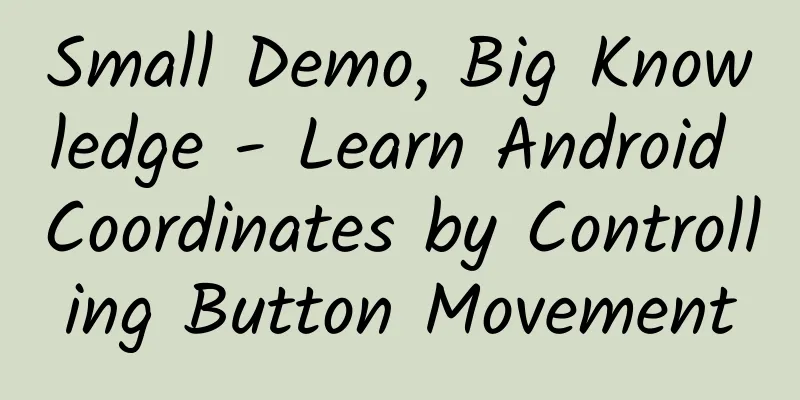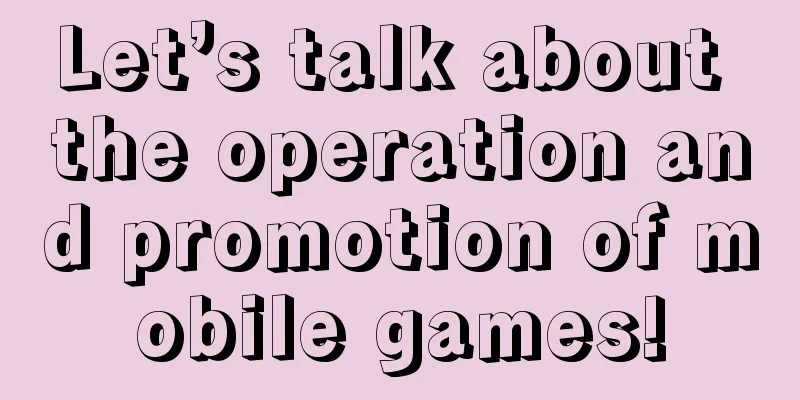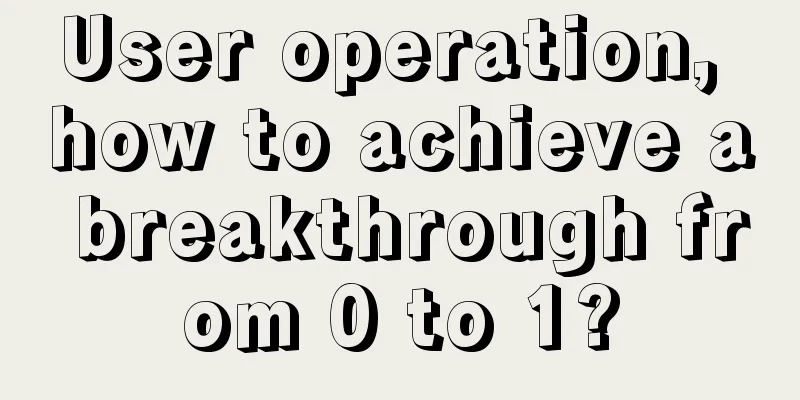Small Demo, Big Knowledge - Learn Android Coordinates by Controlling Button Movement

|
Today I will share a simple demo. The function implemented by the demo is that when you click the button with your mouse, you drag the button. At this time, the button will move according to the movement of your mouse. At the same time, the position of the button you clicked will not change. For example, if you click on the upper left corner of the button, when you move it, the mouse is still in the upper left corner of the button. The effect picture of a disagreement Don't mind the blurry gif above, after all, I took it with my phone. (What can you do to me if you mind? Haha) Let's get some basic knowledge first: The methods involved are as follows:
1.view obtains its own coordinates As shown in the figure above, the parent view of the green area is the yellow area, so left is 55 and top is 55. The parent view of the yellow area is the blue area, so the left is 60 and the top is 115. 2.view gets its own width and height That's right. As the name suggests, it means getting the width and height of the View. Here is a problem I encountered before, that is, sometimes the width and height of a View in the Activity will be 0. 3. motionEvent gets coordinates
So when we click the middle of the Button with the mouse, getX() is the distance between the position where the mouse is clicked and the left border of the Button. getY() is the distance between the position where the mouse is clicked and the top border of the Button. In fact, it is very simple to set the Button to follow the mouse. Just reset the x and y coordinates of the Button when the mouse is moved. That is, use setX() and setY(). Now there is a problem. What values should be filled in these two methods? Let's draw a picture to see it. First, let's set setX(200) and setY(200) for a Button, as shown in the following figure: So actually setting setX(m) and setY(n) for a Button actually means that the coordinates of the upper left corner of the Button are (m,n). So when we drag, we can't simply pass the X and Y coordinates we clicked. As shown in the figure above, if we click on the red area to move the button, and move the mouse to the green area, the button will also move to the position shown in the figure. This is what we expect. However, if we simply pass the X and Y coordinates of the green area and let the Button perform setX and setY, the position of the Button will appear as shown below. So we find that it is further to the right and below than we expected. At this time, we find that the extra position is exactly the X and Y coordinates of the relative position of the green area inside the Button. Now we can think of setting setX(getRawX()-getX()) and setY(getRawY()- getY()) for Button. If you have thought of this, congratulations, you are one step away from the final success. When you write this happily, you will find that the Button you moved is always below the mouse click. You will find that the X axis is indeed correct, but the Y axis is still wrong. As shown in the following figure: At this point you must be asking, WHY??? It turns out that this analysis is fine. But our previous assumptions are all in this coordinate system, but where is the location of this coordinate system??? Cause: Because the getRawY() method we call gets the Y-axis distance from the upper left corner of the screen to the area we clicked, that is, the blue coordinate system is used as a reference. When we set the setY() method for Button, it is the Y-axis distance from the upper left corner of the green area to the area we clicked, that is, the red coordinate system is used as a reference. So we know. We also need to subtract the height of the status bar and the height of the application title bar on the Y axis. Then there is a new problem. How to get the height of the status bar and the height of the application title bar: Get the status bar height
Get the title bar height
in conclusion: So when we drag the Button again, we will setX(getRawX()-getX()) and setY(getRawY()-getY()-status bar height-title bar height) for it. getX() and getY() are obtained when you click it. That is, when motionEvent.getAction() == MotionEvent.ACTION_DOWN, you can get these two values. Because when motionEvent.getAction() == MotionEvent.ACTION_MOVE, getting getX() and getY() may cause different values due to the speed of your dragging. For example, if you drag very fast, the mouse goes over first, and the Button follows. At this time, getX() and getY() are different. Since the Button can be dragged after clicking it, the OnTouch listener must be set for the Button. Here are the key codes:
|
<<: Understanding SharedPreferences in Android API
>>: React Native touch event processing detailed explanation
Recommend
Breaking News | Tik Tok short video marketing secrets: vertical screen advertising 1+1"!
Quick Facts 1. Summary of mobile phone vertical s...
Email inventor Tom Linson dies at 74
Ray Tomlinson, the American computer programmer w...
Do you only know the funnel model for conversion rate analysis? You can also use these
What is a conversion? 1. Conversion rate Let’s ta...
Review: 27 fans pushed the second time, how did I achieve 1,600 readers
I am a novice when it comes to operating a public...
Using this method, promotion costs can be reduced by 50%!
When doing marketing promotion or researching use...
TIOBE November Programming Language Ranking: Is iOS development really no longer popular? OC and Swift have fallen in popularity
There was a time when dynamic languages, or scrip...
5 things you need to think about before building an Internet platform!
People who have been in the Internet circle for s...
3 days, 0 budget, sales of 10,000 goods, all the activity methodology is here!
The article combines the author's actual expe...
What to expect from Google's September 29 event
[[150711]] Apple, Samsung, Sony and Motorola have...
3 key factors and 6 routines for attracting new customers for To B products
Attracting new customers is a very important part...
17 psychological phenomena that planners and promoters must know in 2020
Consumer insights , which marketers often talk ab...
Use Baijiahao's simple graphic content to make JD.com alliance and earn 300+ a day
Many people must know about selling products on Z...
Ding Tianyu - Technical Practice Guide, Make Money from Scratch in Stock Trading
Ding Tianyu - Technical Practice Guide, Make Mone...
HTML 5 has won out – but for how long?
[51CTO.com Quick Translation] We have compiled va...
2022 Chinese video film and television mixed editing project pseudo original project
2022 Chinese video film and television mixed editi...









